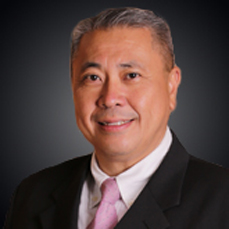May 8, 2025 l Manila Bulletin

An internet search will easily yield a wide variety of answers about the learning process, but I want to share my own experience and approach to succeeding in it. It really starts with the goal, or what you want to learn or know. From there, you need to gather information about the subject. Once you have enough information, you need to analyze and synthesize all this knowledge. The final step is, of course, the implementation or execution of what you have learned. Depending on the quality of the result, you may have to repeat the whole process to achieve a better outcome.
“Begin with the end in mind” is from Stephen R. Covey’s “The 7 Habits of Highly Effective People,” a popular book by the American educator and author. Knowing what you need to achieve gives you a clear destination and makes it easier for you to focus on how to get there. The objective or goal may be something very simple and straightforward or something complex and a continuing process of improvement. As an example, you might just want to learn how to cook rice for your lunch today, which is easy to learn and quick to achieve. On the other hand, if you want to become a Chef in a Michelin-starred restaurant, this will definitely take more time and effort, requiring a lifetime commitment and a continuous learning process.
The second stage is gathering information about the subject from various sources. You can always access the internet and learn from instructional videos from the various apps available. Depending on your resources, you could access information online, through books, publications, and other available references. If you are fortunate enough, having knowledgeable and experienced people guide or teach you is also a very good way to gather information and learn from these subject matter experts.
Putting it all together is the third step in the learning process. Think of buying a product that you need to assemble yourself; you may have all the parts and pieces, but you need to follow the instructions on how to put these things together. You need to be able to analyze or break down this information into constituent parts to understand its components and relationships. You would also need to be able to synthesize all the knowledge you have to assemble, combine, or put together so that you can achieve the whole end result.
Finally, and probably the most critical part, is the actual execution. This is where you need to put everything you have learned into achieving the final outcome, to implement what you have learned. For golfers, this is like going out to the fairway to actually play a round of golf for the first time, after learning the basics, understanding the concepts, getting golf lessons, and practicing at the driving range. Of course, you probably won’t be too good at whatever you are doing for the first time, but it comes with experience, a developed skill, and a deeper understanding of what you are doing and learning ways to do it better.
The most important thing you need to understand is that knowledge or information is not the ultimate objective; it is the ability itself to learn and understand the process to be able to continuously improve and grow. The most successful people can use this process to learn from their mistakes, make constant improvements, and come up with new ideas, inventions, and innovations.
***The views expressed herein are his own and do not necessarily reflect the opinion of his office as well as FINEX. For comments, email georgechuaph@yahoo.com. Photo is from Pinterest.

